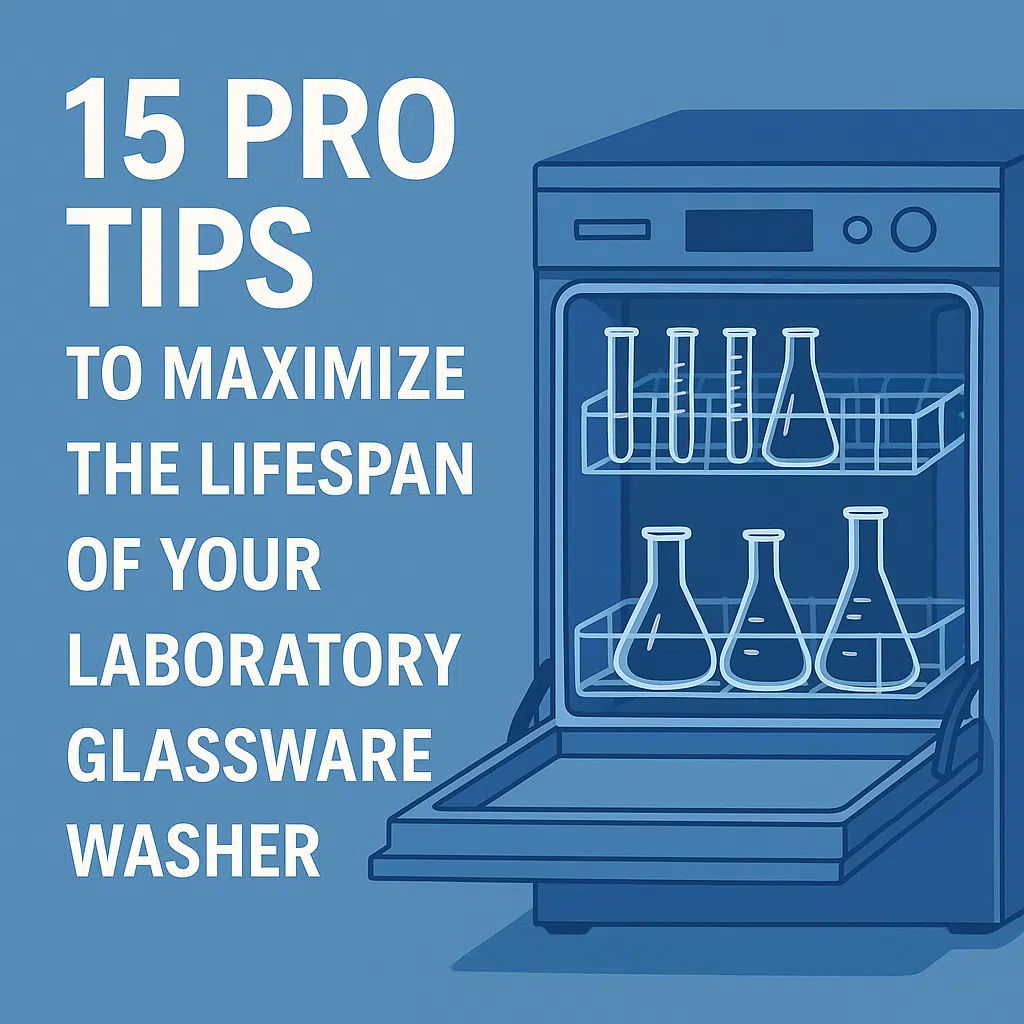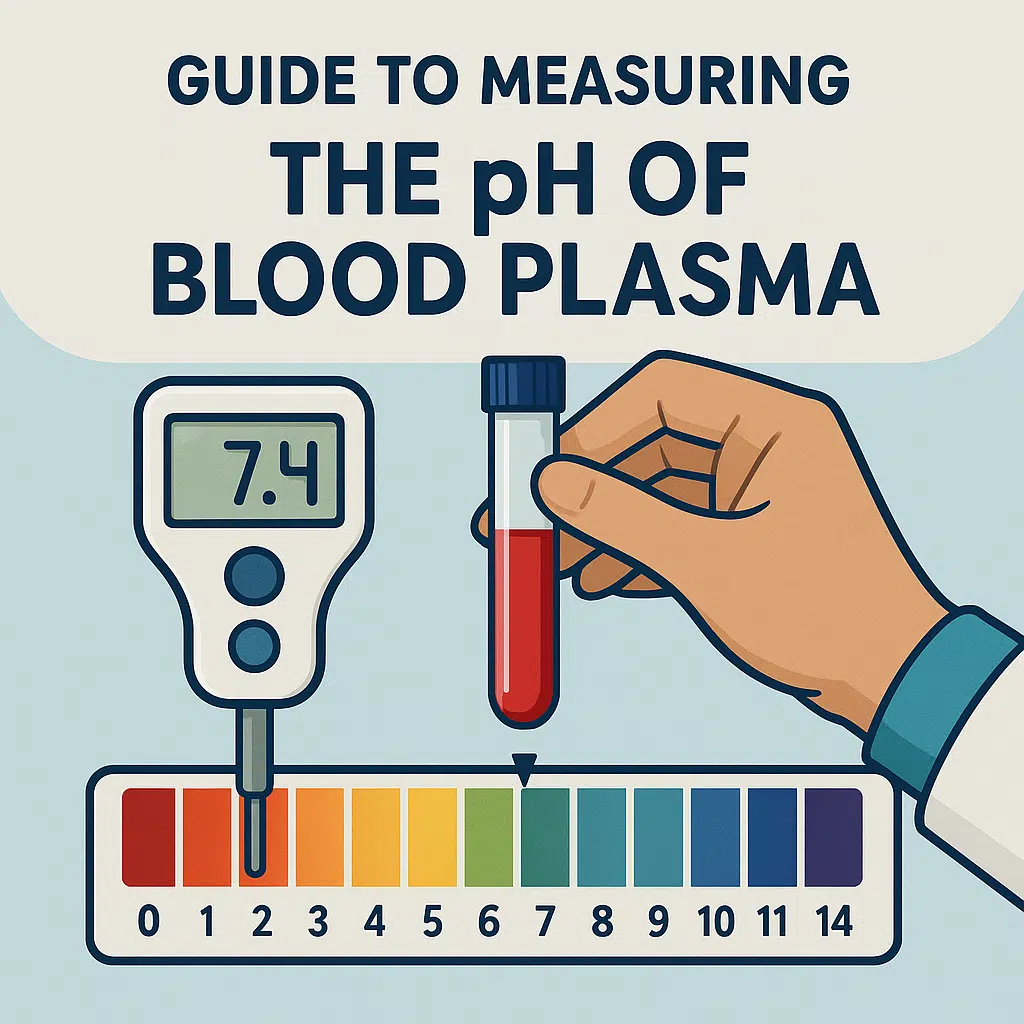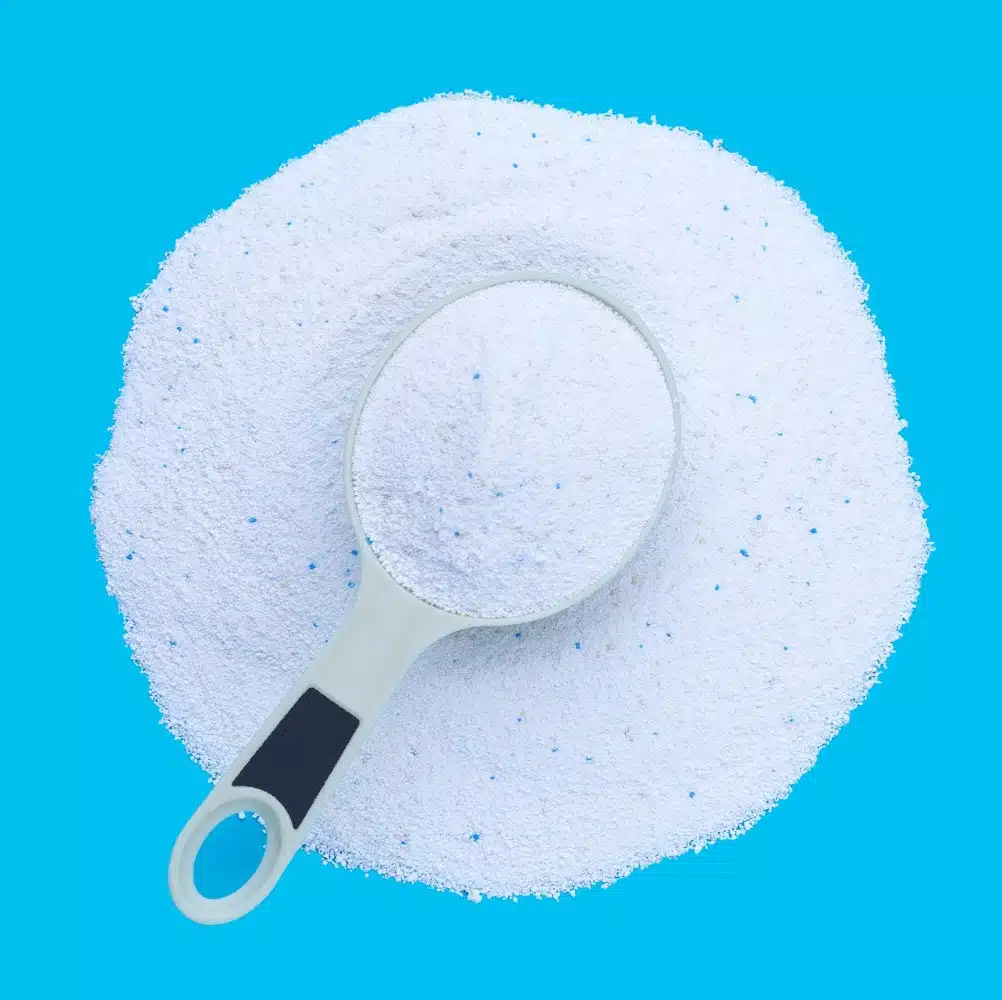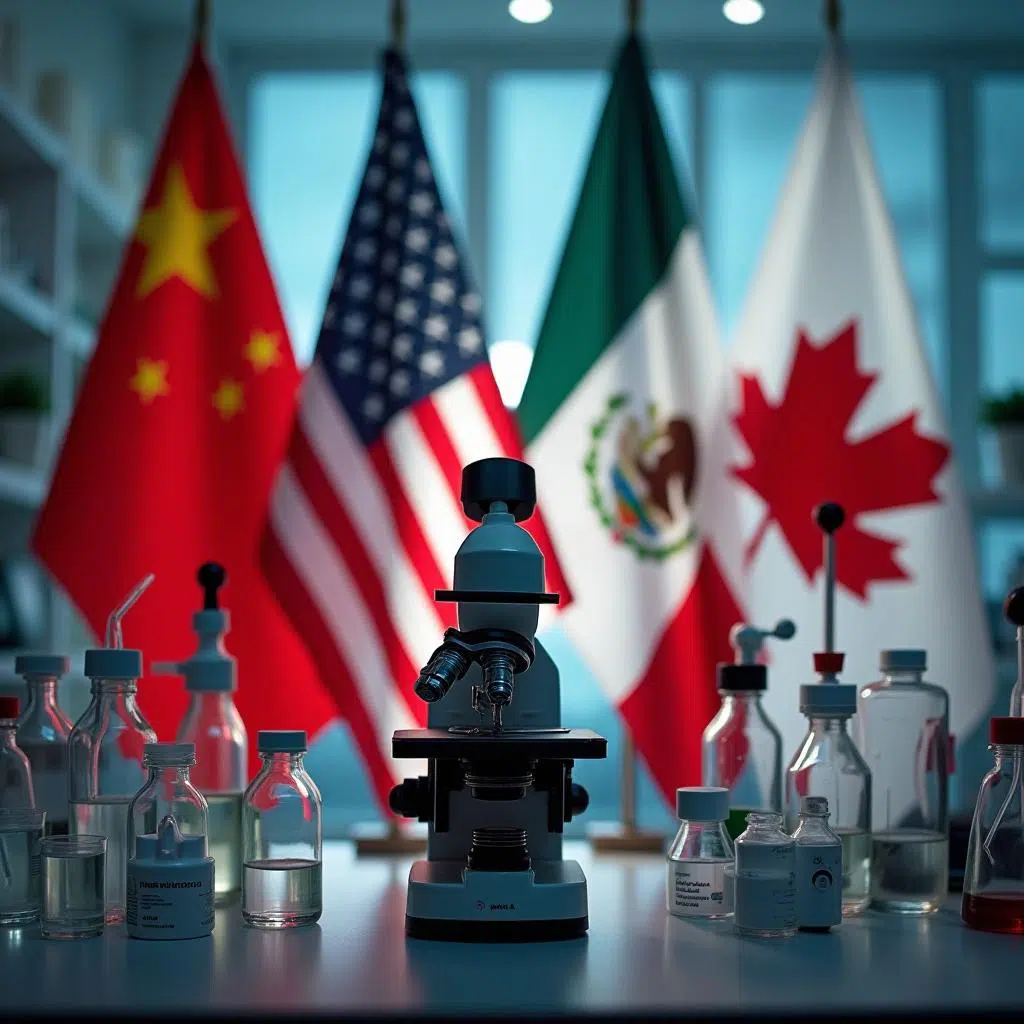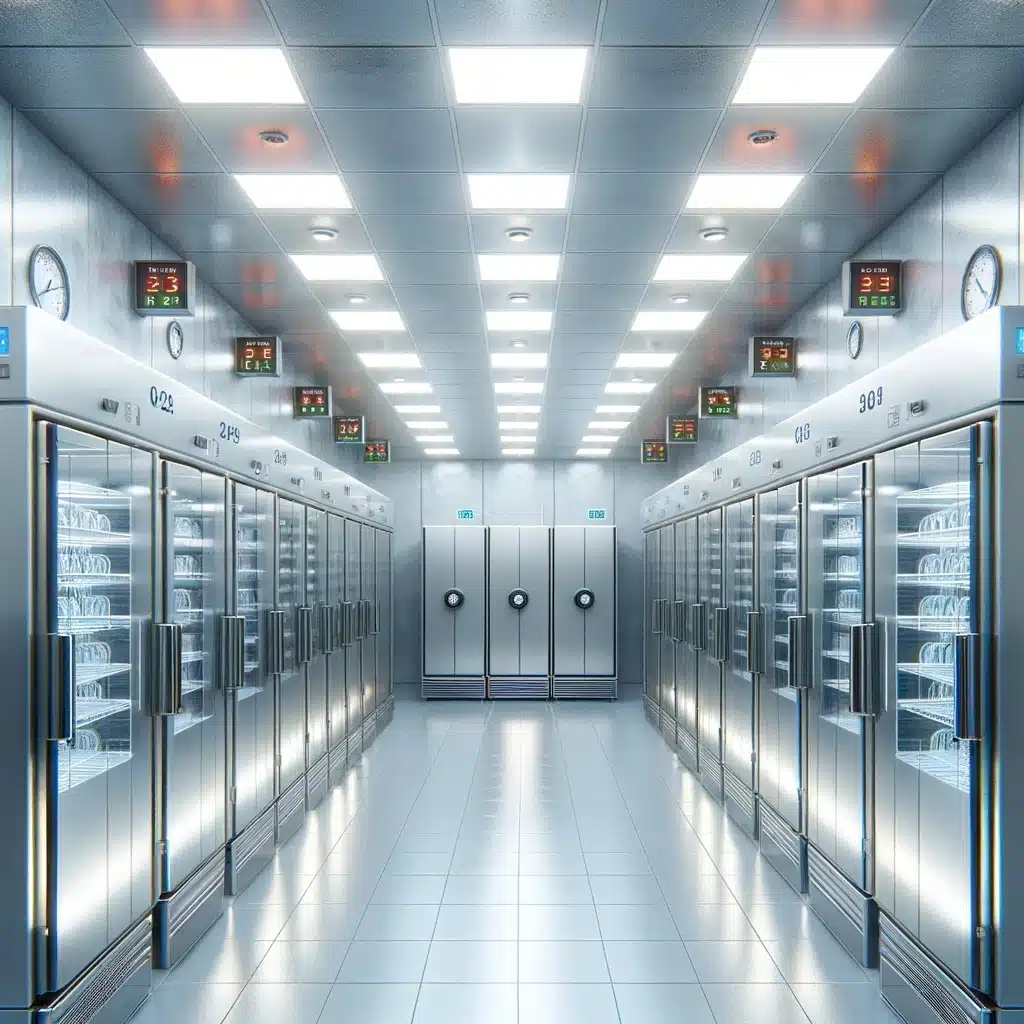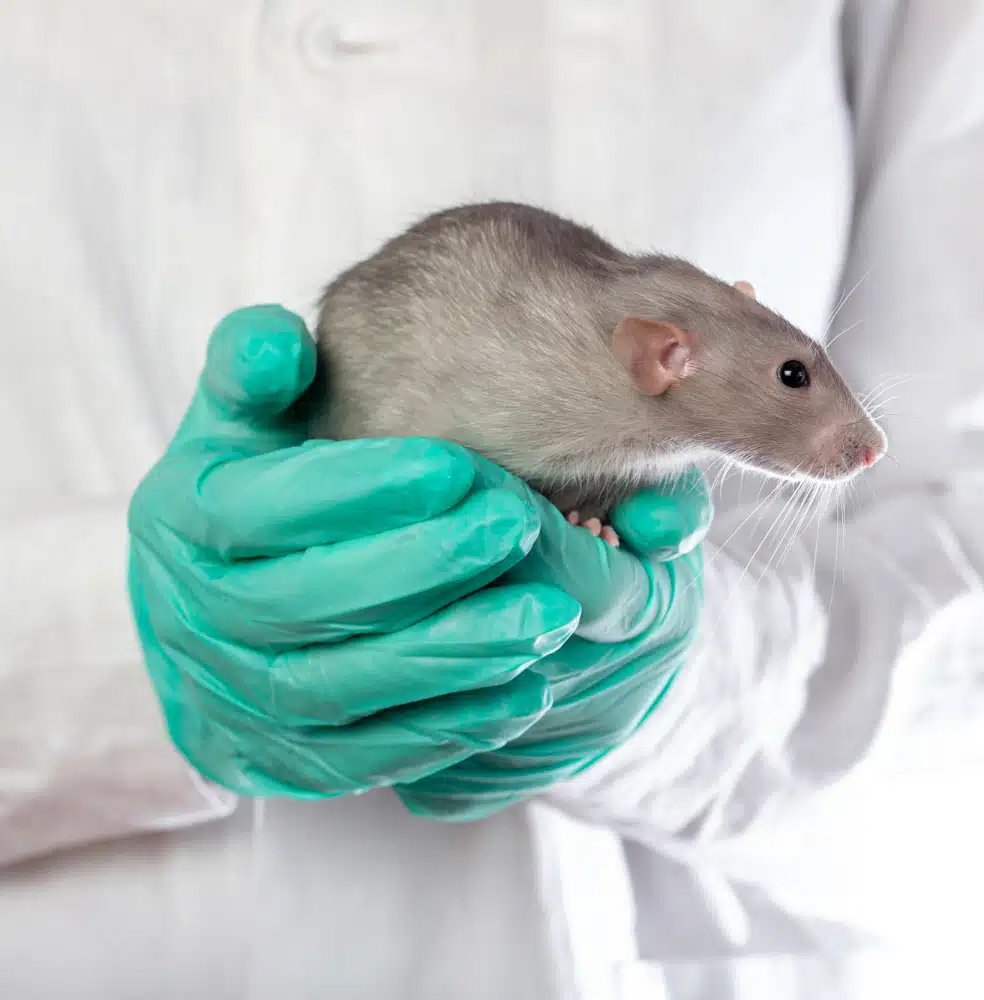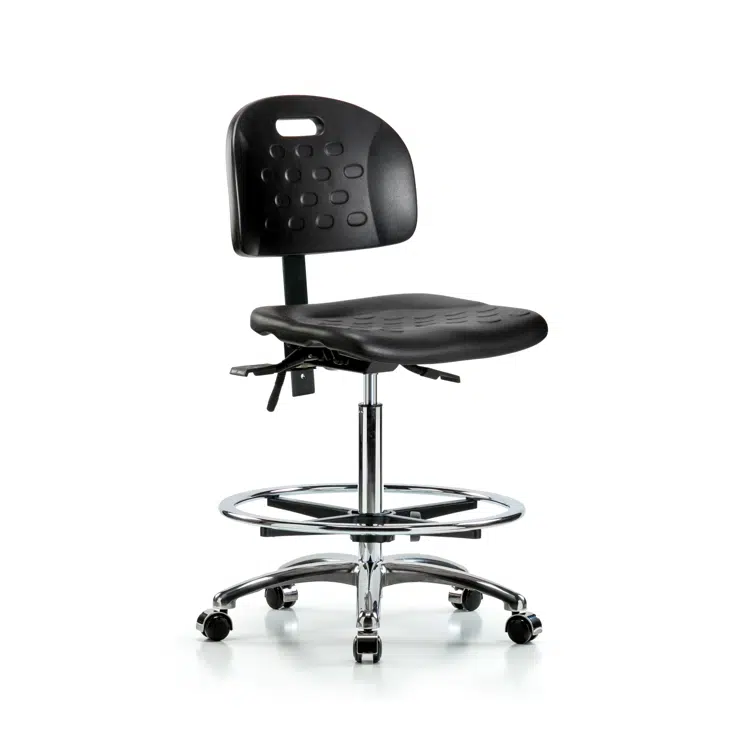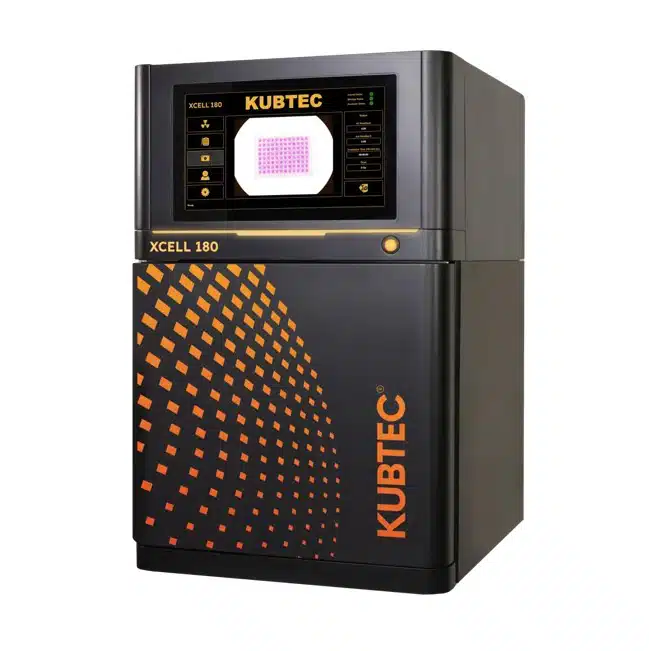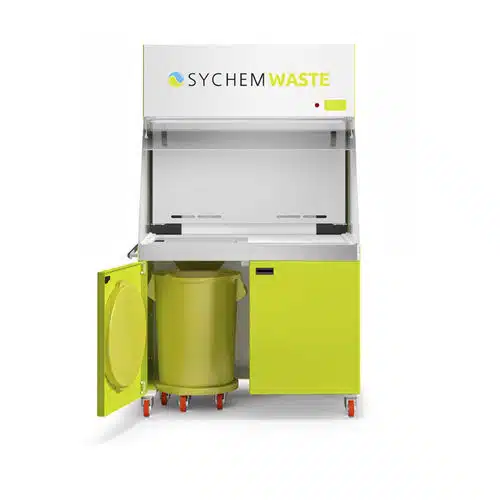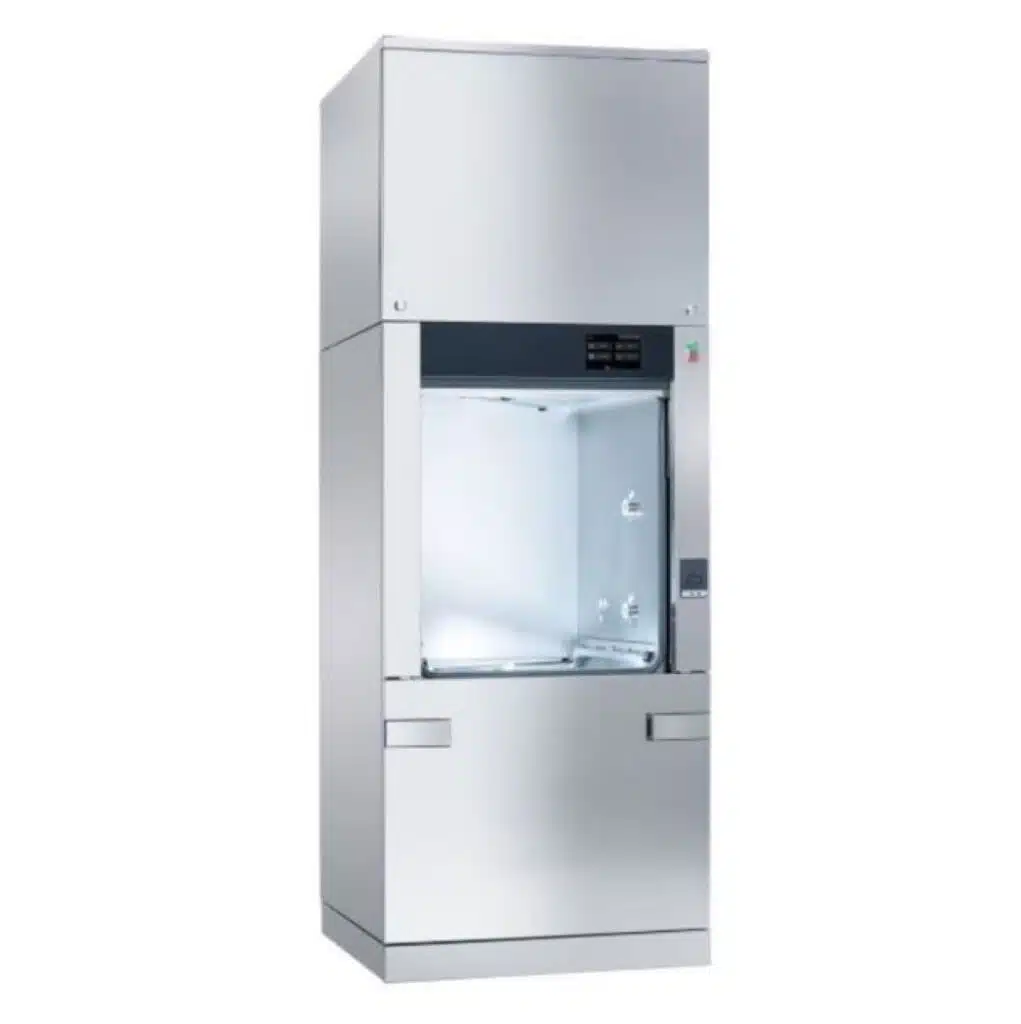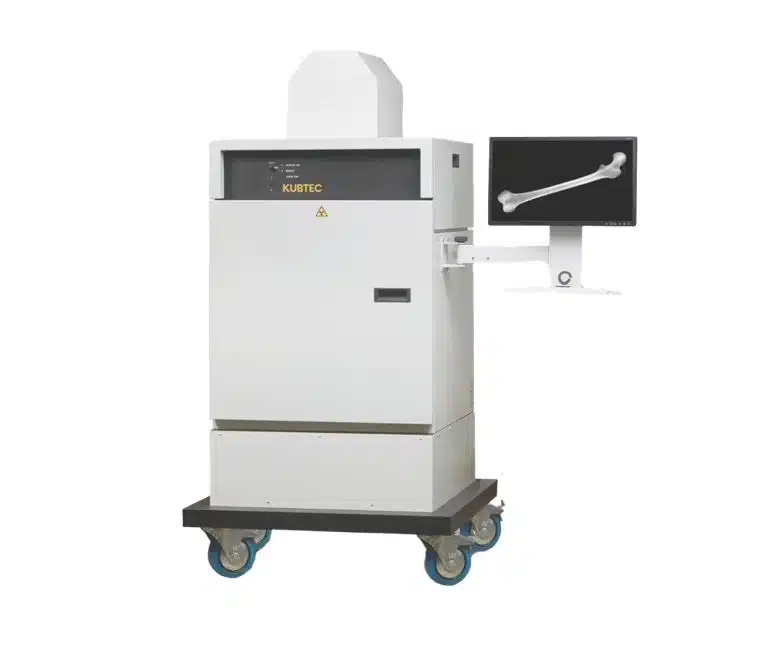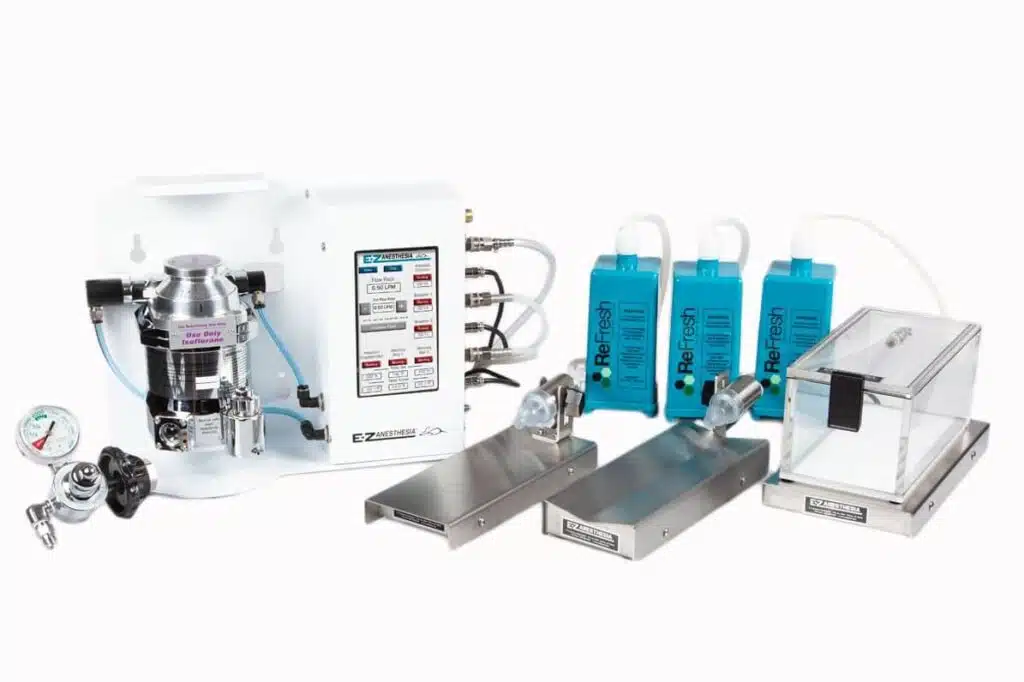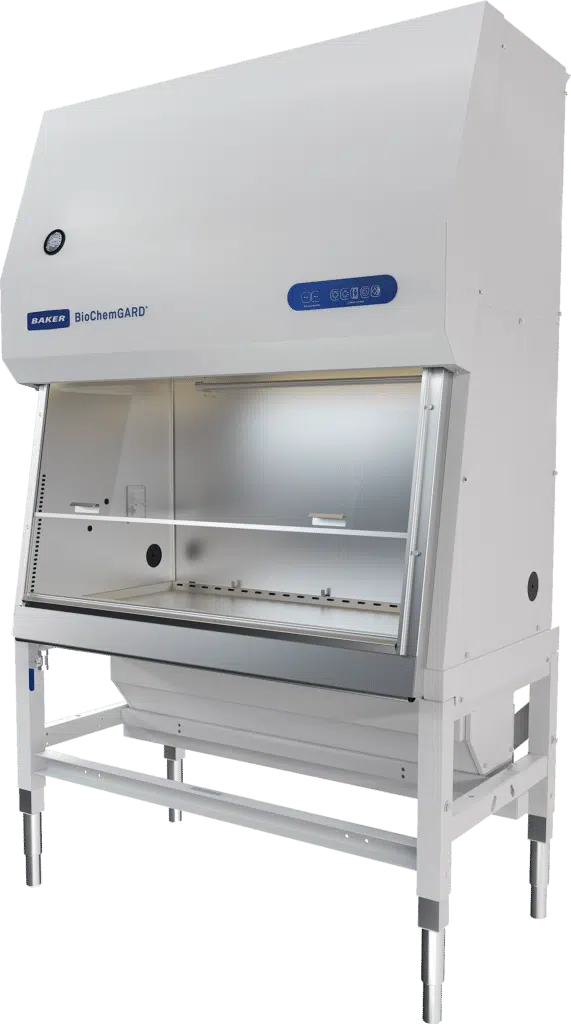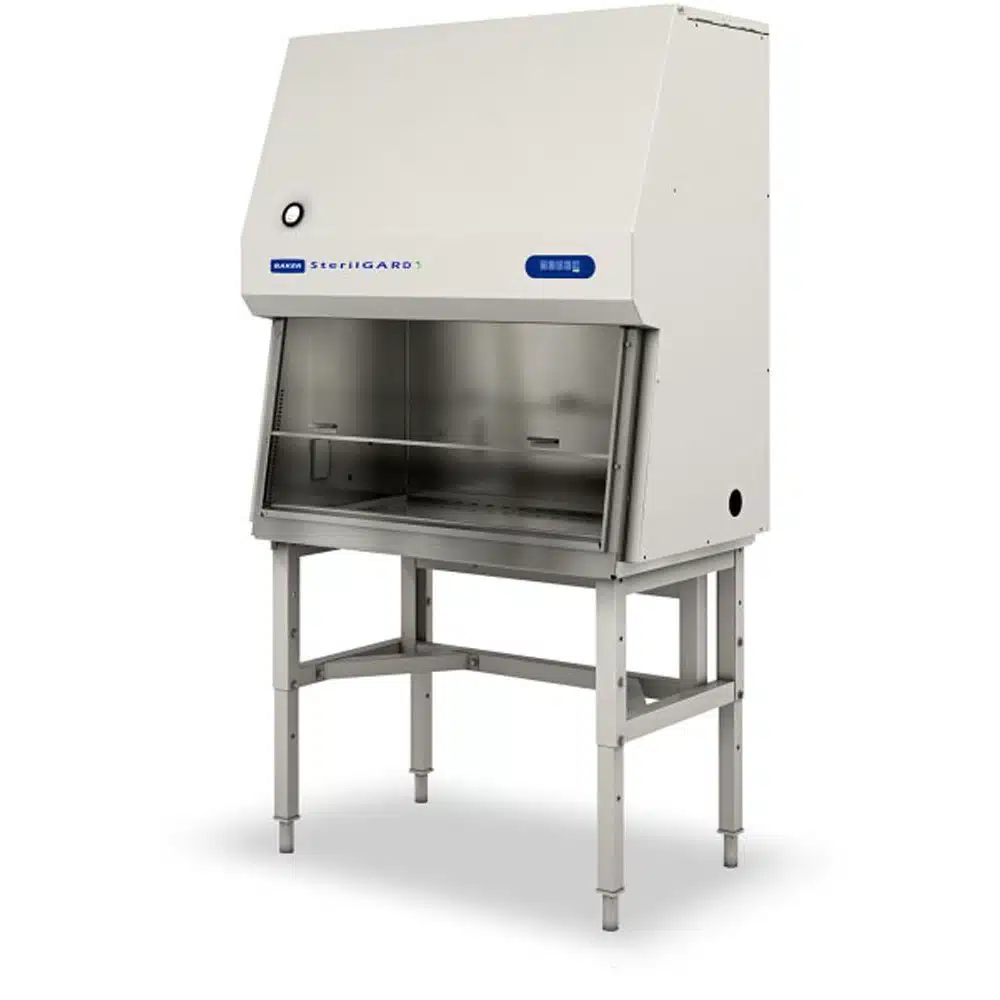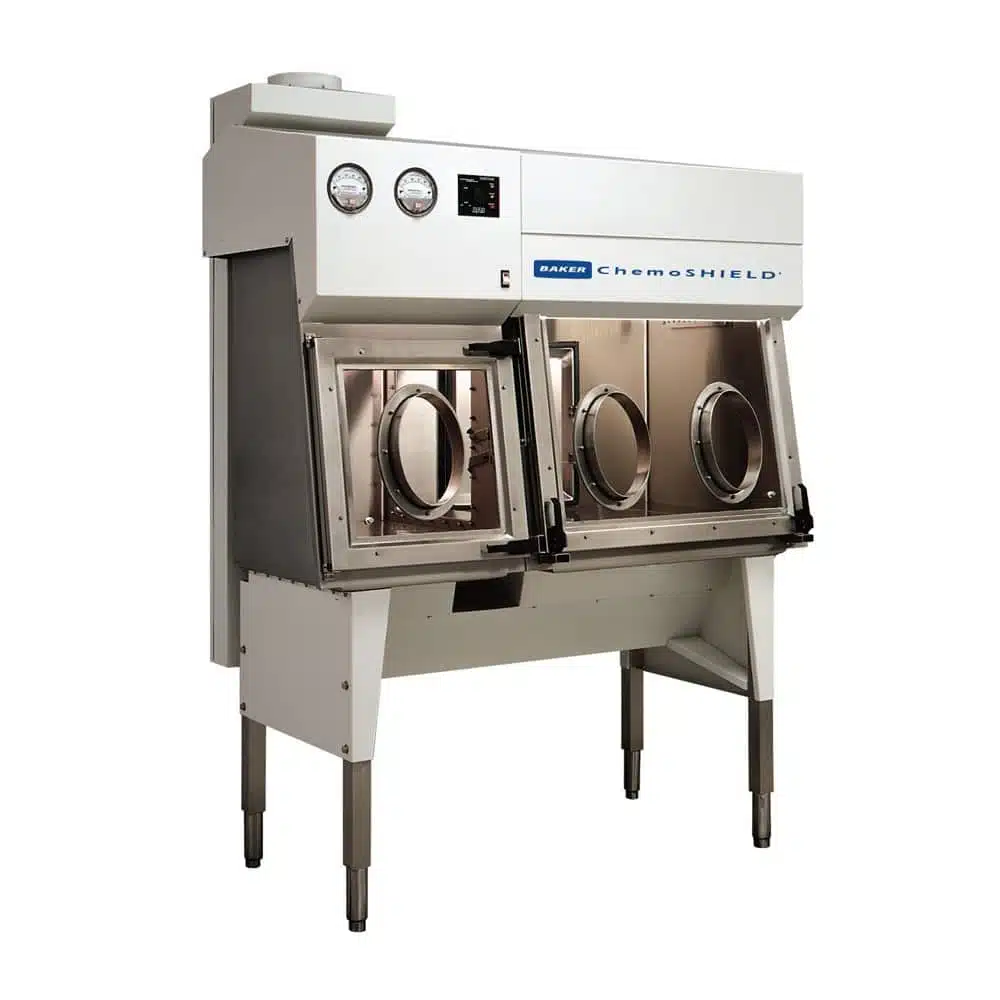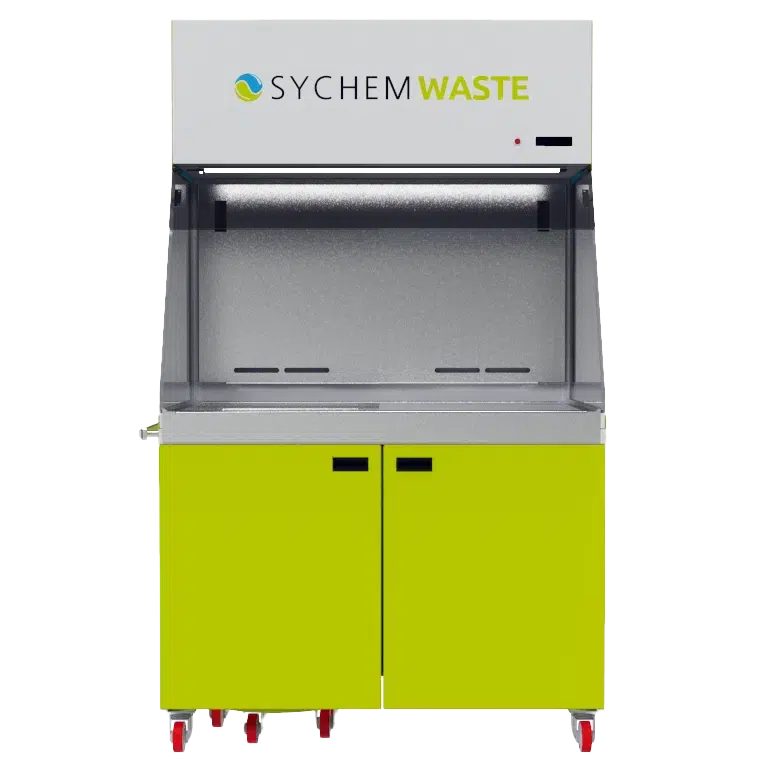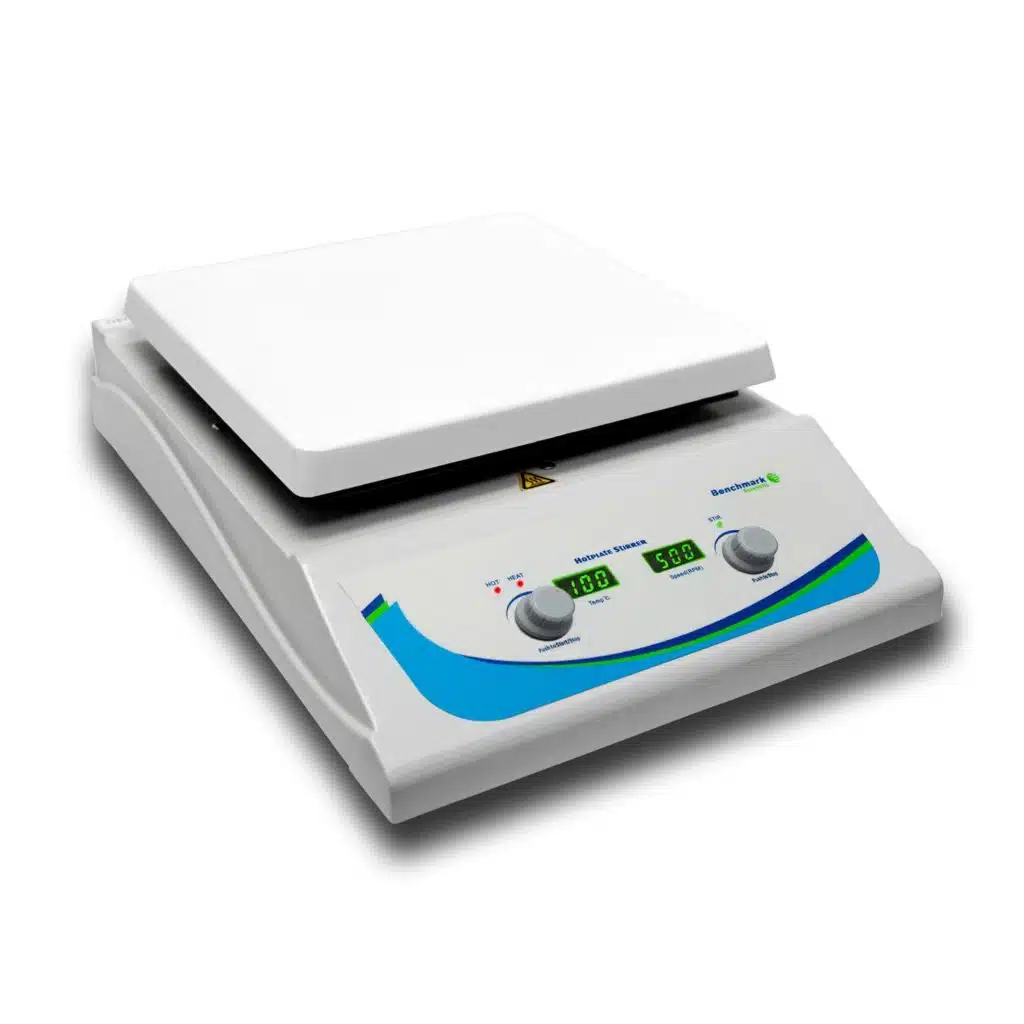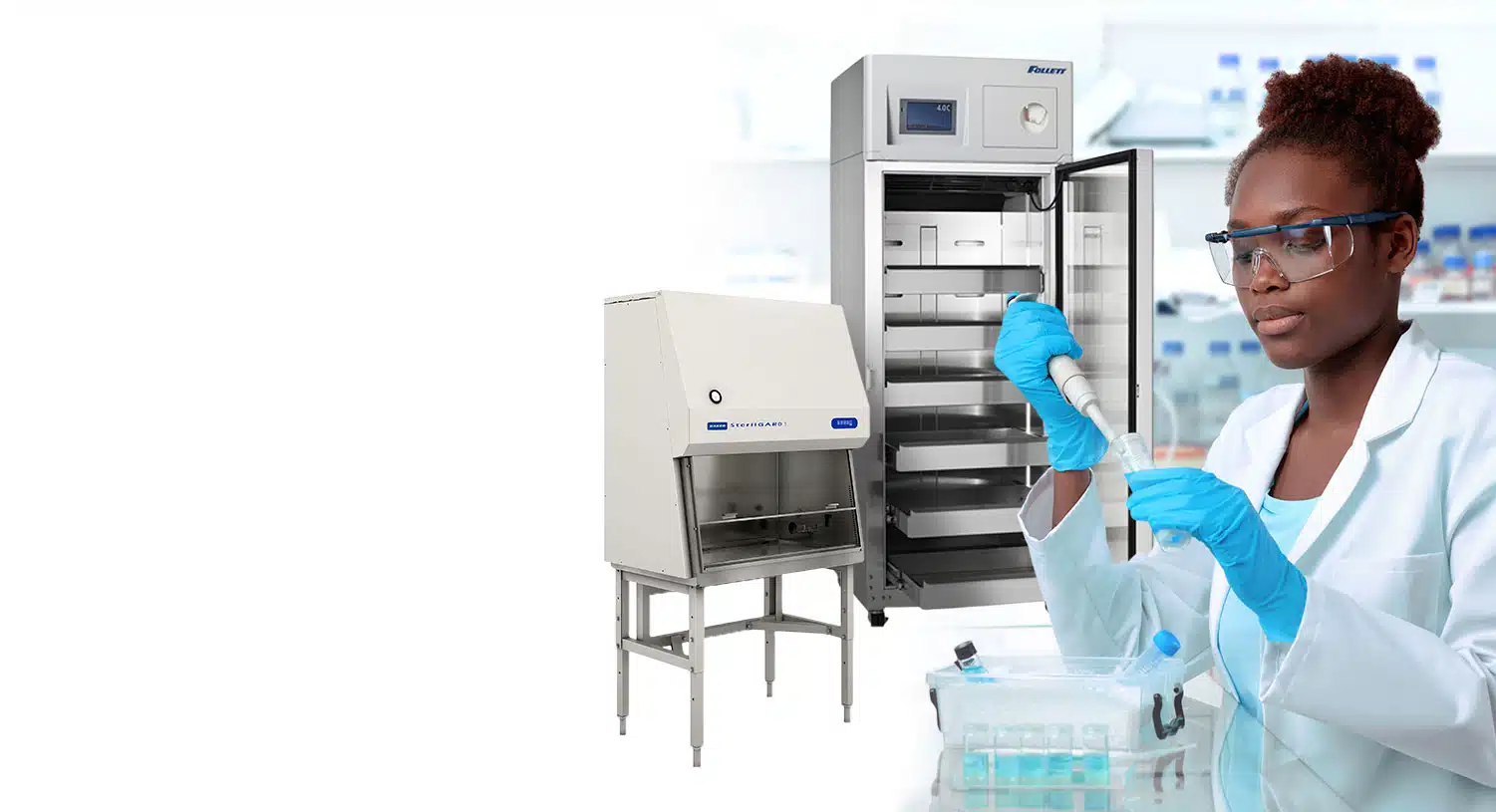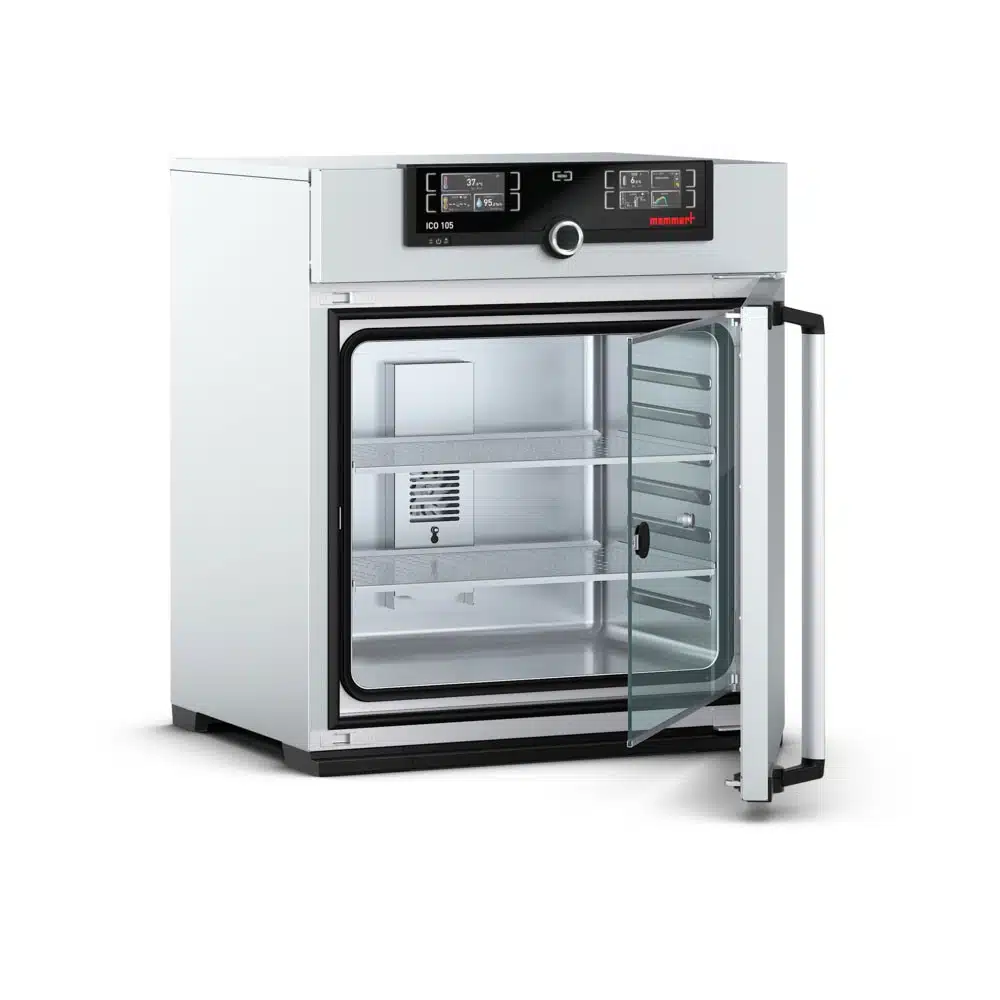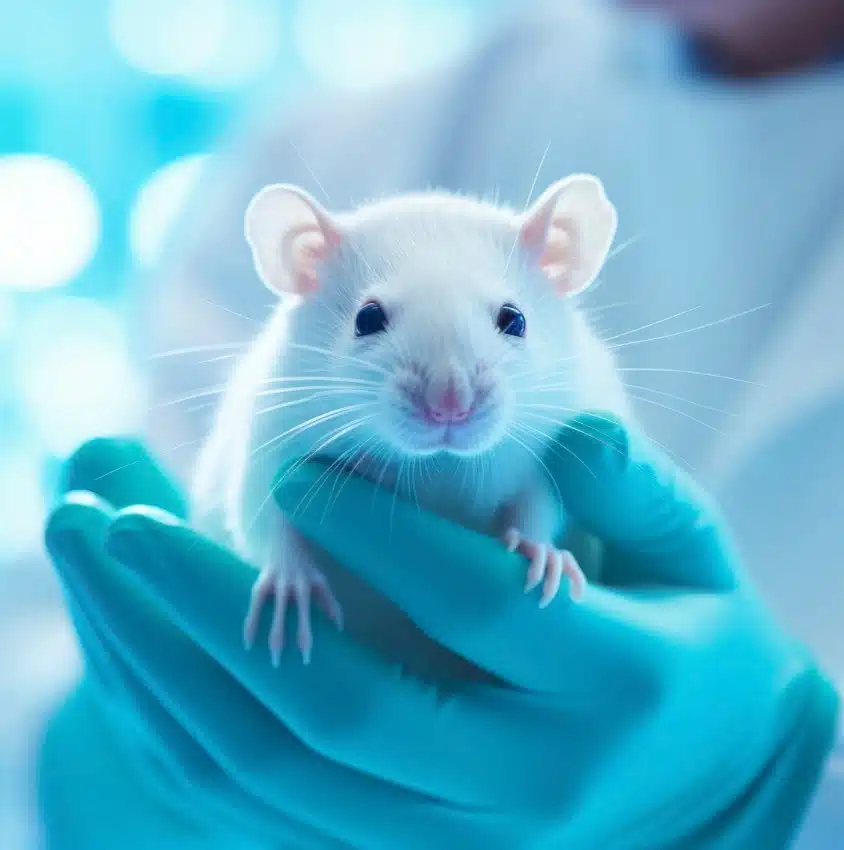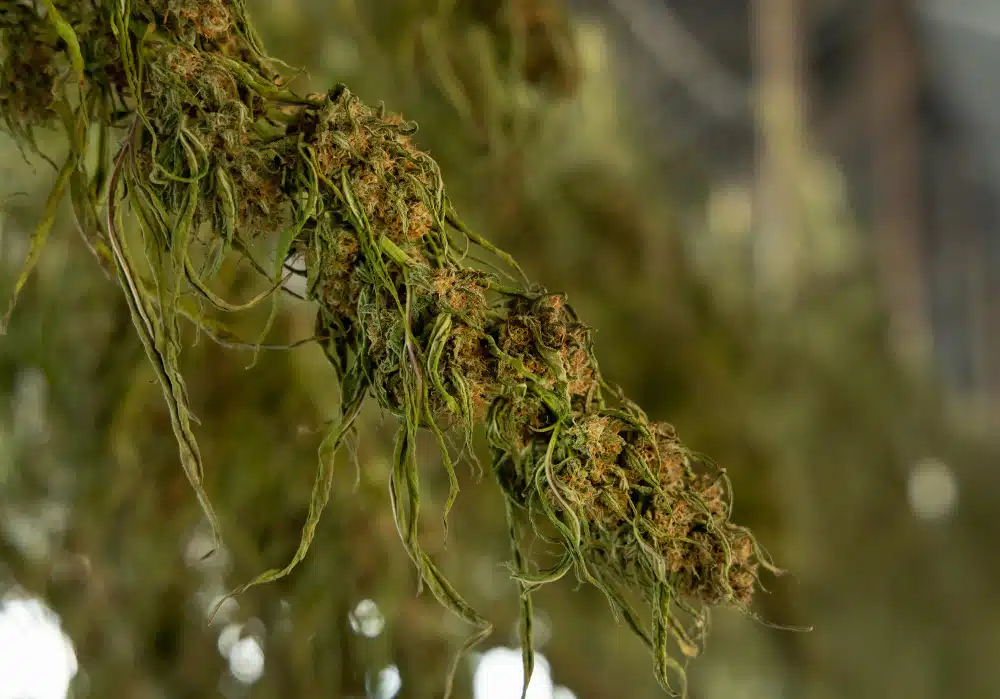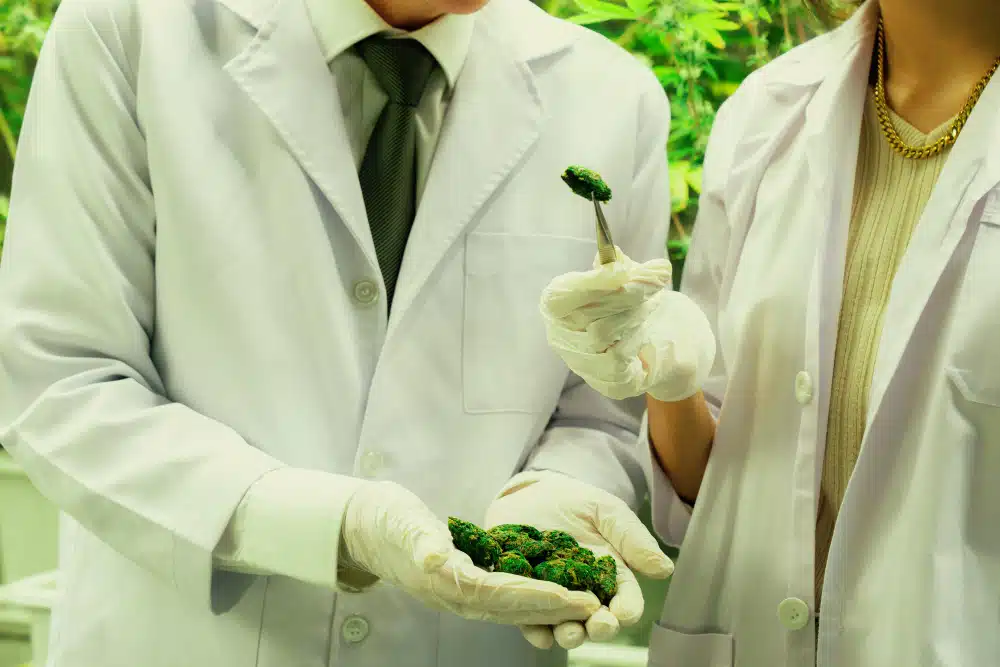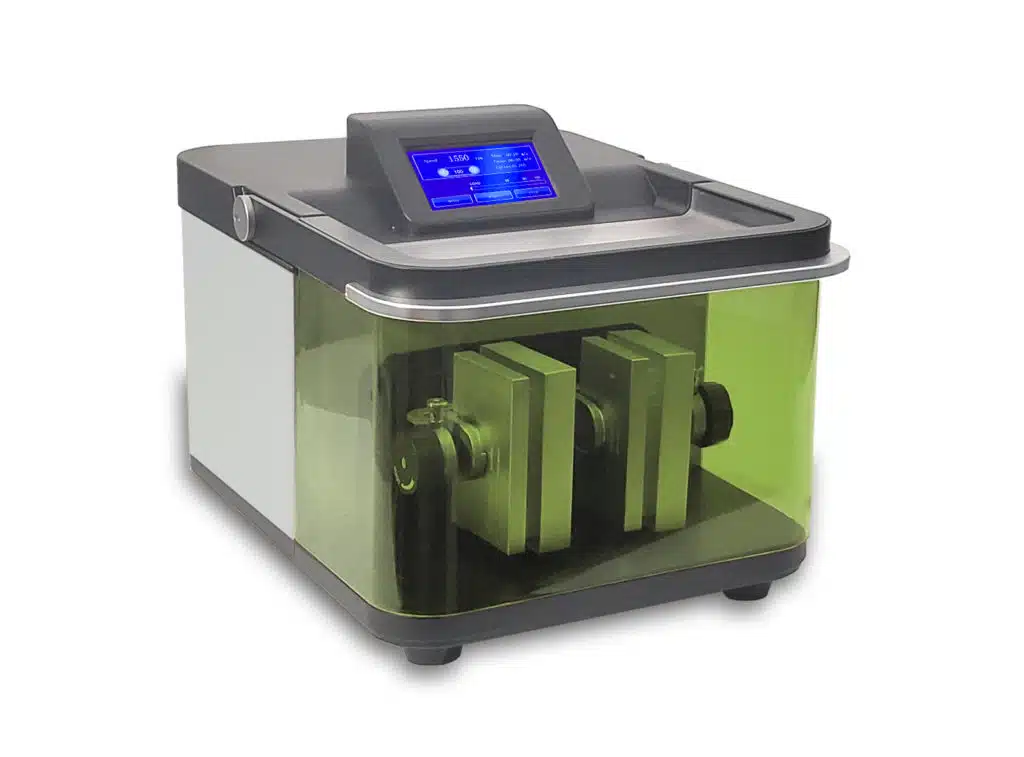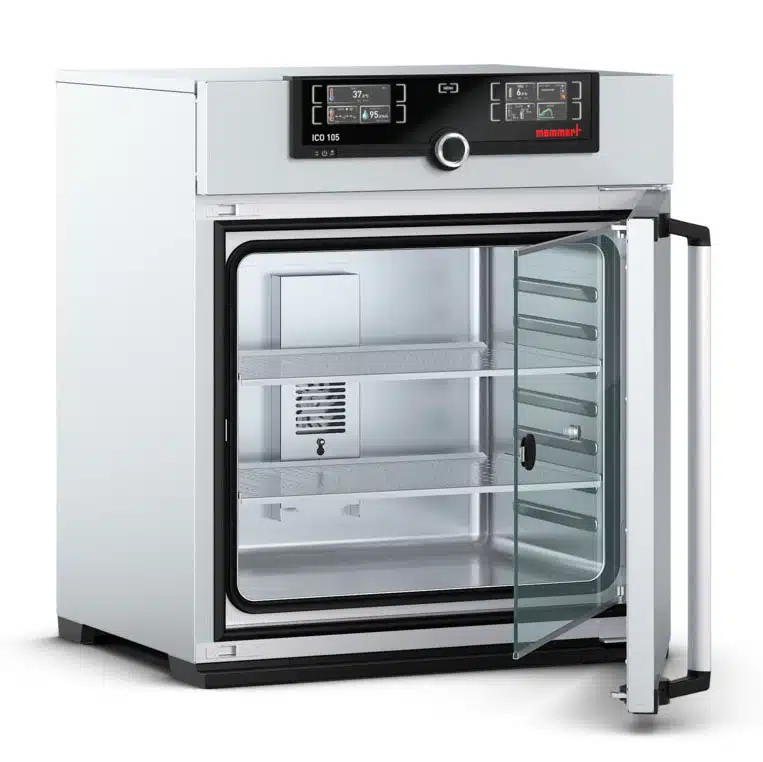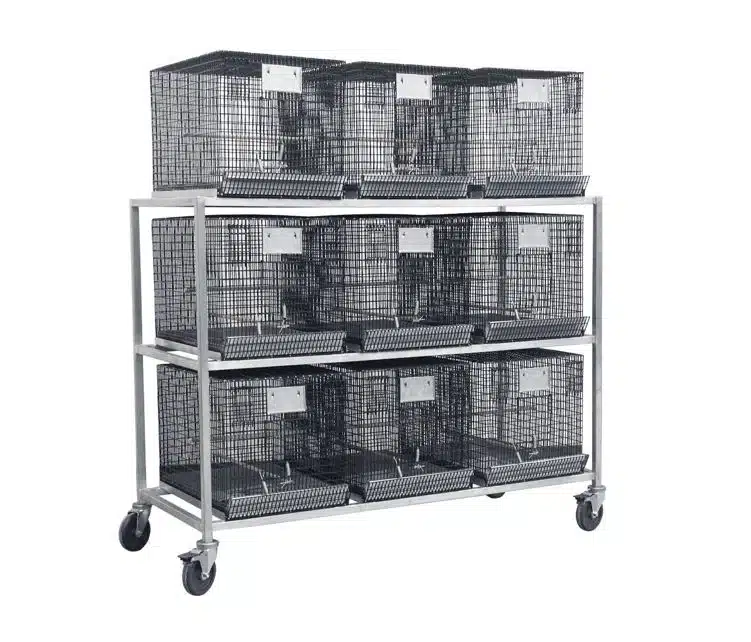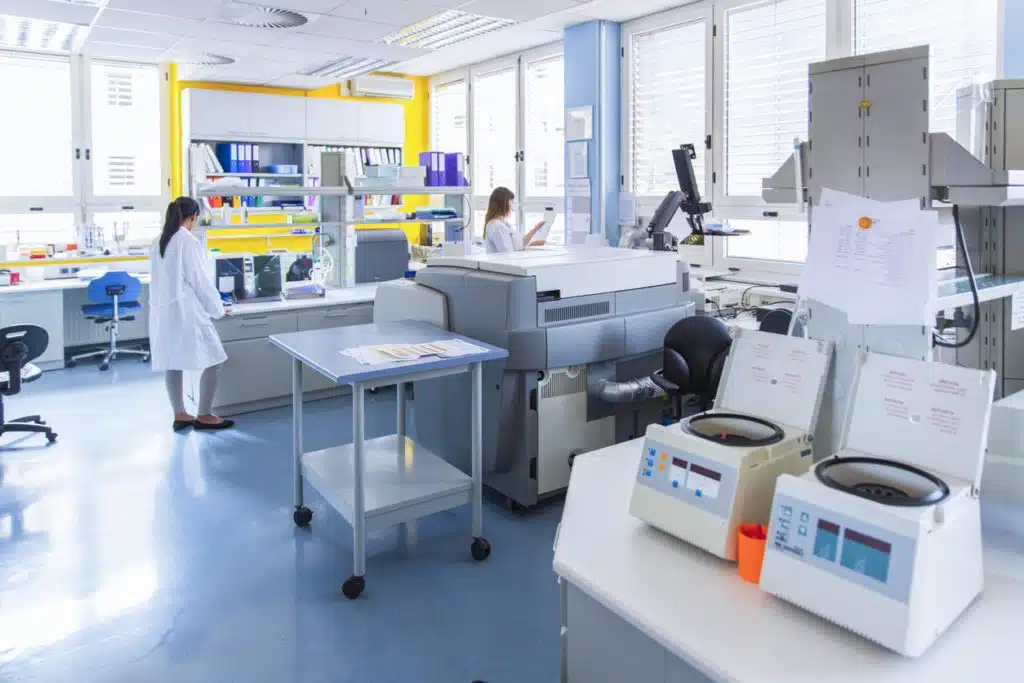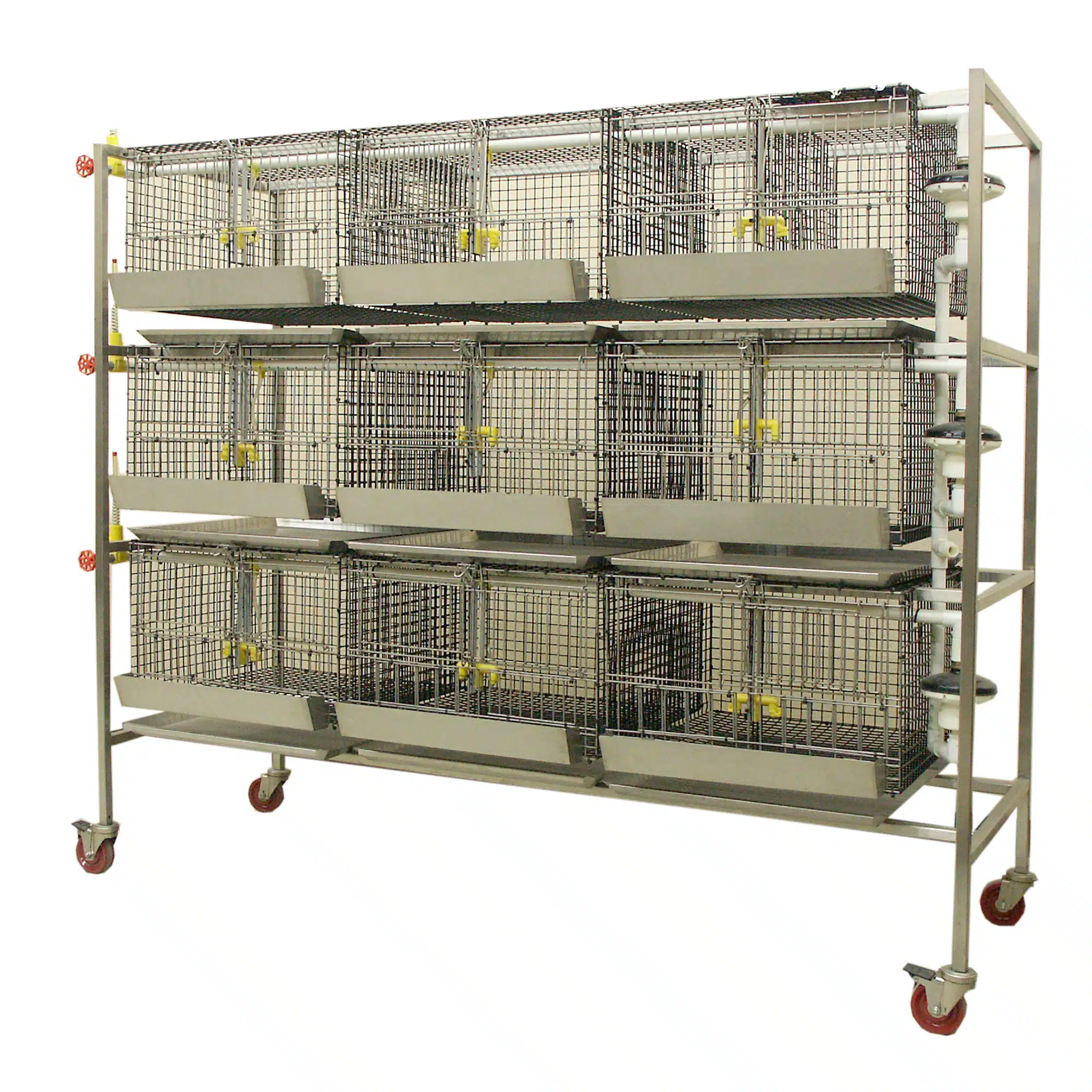Scientific hotplate stirrers are often a critical part of the lab technician’s toolset. Some hotplates and stirrers are digital, others use magnets and others still are completely analogue. Regardless, they are crucial pieces of kit used for mixing and heating of aqueous solutions, whether for decarboxylating cannabis or for simply ensuring a substance is at a precise temperature for experimentation.
This article will serve as a guide to selecting the right type of temperature technology, with a distinct focus on hotplate stirrers for decarboxylation.
What is a Hotplate Stirrer?
As you can see from this hotplate stirrer diagram, this type of stirrer is designed to mix materials on the top plate, whilst keeping a stable surface temperature and consistent mixing time. It is designed to heat different products whilst stirring them, which allows individual materials to be compounded together, thus enabling or accelerating certain chemical reactions.
Essentially, hotplate stirrers are kinetic and thermal tools that move to spread the energy as consistently as possible through your beakers to allow for chemical stimulation. One of the main uses of a laboratory hotplate stirrer is to help convert cannabinoids into tetrahydrocannabinol (THC) and cannabidiol (CBD) through decarboxylation.
Hotplate Stirrers and Cannabis
A hotplate stirrer’s function relies on its heating and combining abilities. This can either be through magnetic stirrers, digitised movements or analogue stirrers. However, the real question is how do hotplate stirrers assist with the decarb process of the cannabis plant? Well, decarboxylation occurs in the Carboxyl group when it is heated up, which transforms it from THCA and CBDA into THC and CBD:
The decarboxylation process relies heavily on heat; therefore, you need a hotplate stirrer with a temperature probe. You can leave your cannabis for 30 minutes to be stirred and heated up to ensure all the psychoactive compounds are taken out of your CBD. 230°-250°F is the recommended temperature. Such temperatures make decarbing cannabis easier. The graph below shows why this temperature is so important to maintain, which is why you need a chemistry hotplate stirrer to do it. Just keep in mind that it mainly focuses on THC. For CBD, it takes twice as long:
You can heat cannabis on a baking sheet before drying and curing, however a lab hot plate stirrer will precisely reach the decarboxylation temperature. Therefore, this acid form will be purer.
Which Hot Plate Stirrer is Right for Me?
Moving beyond cannabis extraction, let us consider the most appropriate stirrer for you. Hotplates include:
- Digital hotplate stirrers
- Analogue hotplate stirrers
- Magnetic hotplate stirrers
For stirring more complicated materials, you should use a digital hotplate, rather than magnetic or analogue. These products keep materials less precisely heated. A digital hotplate will provide:
- Large LCD screens for data display
- Alarm systems
- Warning lights
- Quick shutdown systems
Another thing you need to consider is your stirrer’s material. Most designs come as either ceramic, aluminium or glass and have very durable top-plates. You will also need to think about whether you want only one or multiple points of heat.
Finally let us consider the hotplate stirrer price. The more control you want over a material, the more you will likely spend to find the perfect hotplate stirrer. Simpler hotplate stirrers will cost around £43 – £400, however more complicated devices may range even higher.
Professional Hotplate Stirrers available from ARES
Hotplate stirrers are an essential tool for your laboratory. That’s why you will be pleased to know that ARES supplies a wide variety of hotplate stirrers available for purchase. When you buy a hotplate stirrer from ARES, you will know that it is a high-quality product with a built-in accurate monitoring system.
Find out more about the type of hotplate stirrers we have on offer by contacting us today on 844-444-2737, at info@aresscientific.com or by visiting our contact page.





